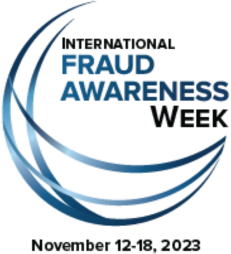Released on
By Dalina Tolbert, customer compliance and training manager, Employment Security Department
The massive wave of fraudulent unemployment claims that Washington and other states experienced during the pandemic has subsided — thank goodness. But the fight against fraud continues. We can never let down our guard!

I’m proud to support the team at Washington’s Employment Security Department (ESD) dedicated to this work. Please take a moment during International Fraud Awareness Week to read about their efforts.
ESD works tirelessly to protect the unemployment trust fund by preventing and detecting loss due to fraud. Pre-COVID, we were a small group of investigators who worked in the background. During the pandemic and the influx of fraudulent claims, we grew to upwards of 200 staff members and formed a new agency division.
Before that and since, our investigators have remained focused on stopping bad actors and ensuring the right customers receive benefits. In fact, ESD has been able to reduce fraud loss from 13.28% during the pandemic to .02%.
What is fraud?
Fraud can be:
- Someone uses another person’s personally identifiable information (PII) to establish an unemployment claim.
- A business intentionally doesn’t register with the state or pay its fair share of taxes.
- A claimant knowingly provides false information to us in order to receive benefits.
ESD recently prioritized a project team that focuses on backlogged identity and earnings issues:
- Identity issues: These issues are created when we crossmatch claim data between several sources and the data elements don’t match. Or identity issues can be created when we suspect that the person filing the claim isn’t the owner of the Social Security number.
- Earnings issues: These issues are typically created when an employer responds to a wage verification form and reports earnings that do not match what the claimant has reported on their weekly claims.
We’re not alone in this fight!
ESD constantly compares data with the National Association of State Workforce Agencies Integrity Data Hub (IDH) and with the state Department of Licensing. We continually adjust and shift our crossmatch filters to identify potential suspicious activity.
Two recent improvements include:
- We send all unemployment applications to NASWA’s IDH, where they are checked against a multi-state database of information associated with known or potentially fraudulent claims. Changes to this crossmatch have decreased the amount of identity issues set by 20%.
- When people apply online for benefits, they need to enter their driver’s license number, if they have one. A recent update to the online application will help improve the accuracy of the information claimants enter. The system will prompt claimants to correct their entries when making common errors.
Who is responsible for identifying fraudulent activities? All of us!
You can help us fight a current scam:
Claimants need to create a SecureAccess Washington (SAW) account in order to use our online application. ESD has identified a recent fraud attack linking claimants to fake SAW websites. Criminals then steal the claimant’s login information.
Claimants should use only ESD’s login page on esd.wa.gov to apply for unemployment benefits or to access their claim information. Instead of using Google or another search engine, the safest route is to type 'esd.wa.gov' in the web address field. Then from ESD’s homepage, scroll down to the eServices sign-in button.
More helpful resources on our website:

Dalina Tolbert is ESD’s compliance and training manager. She also serves on the NASWA integrity committee.

